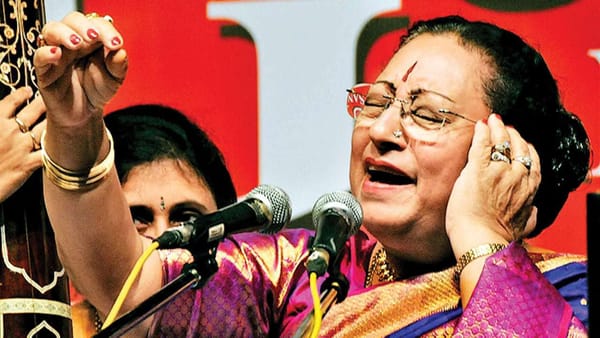Putting God In The Right Place- Home Shrines by Gokulam
Accept for the atheist, nowadays, being spiritual is a way of life for most practicing Hindus and Buddhists. It is common for most people from these religions to have an altar placed in some part of their abode and it appears important to put God in the right place too.

Accept for the atheist, nowadays, being spiritual is a way of life for most practicing Hindus and Buddhists. It is common for most people from these religions to have an altar placed in some part of their abode and it appears important to put God in the right place too. One needs to have a special place of worship. Putting God in the right place is simply building a home shrine. Historically, in Hinduism, Buddhism and Roman Catholicism, and also in modern faiths, such as Neopaganism, a shrine can commonly be found within the home or shop. This shrine is usually a small structure or a setup of pictures and figurines dedicated to a deity that is part of the official religion, to ancestors or to a localized household deity.
Small household shrines are very common among the Chinese and people from South and Southeast Asia, whether Hindu, Buddhist or Christian. Usually a small lamp and small offerings are kept daily by the shrine. Buddhist household shrines must be on a shelf above the head; Chinese shrines must stand directly on the floor. Almost all Hindus keep a shrine in their home, regardless of their caste or economic status. These shrines, dedicated to a particular deity , vary in size. Some families can afford to leave aside an entire room while others can devote only a corner of the bedroom. In either case, the sacred space, like the shrine of a temple, is tended to religiously. Here, family members worship collectively or individually.
Daily duties of a Hindu and Buddhist can be succinctly summarized as follows:
Worshipping God: Hindus must devote part of their day to worship. This ensures spiritual contact
Reciting scripture: By reciting from a sacred text, the faithful learn the lessons of worldly and religious life
Honoring to parents and elders: Hindus are very loyal family members. Parents and elders are honored for their wisdom and self-sacrifice.
Helping the poor: Even the less fortunate try to obey this commandment. Guests, in particular, are given special attention in a Hindu home
Feeding animals: Because Hindus consider all life a sacred part of one God, animals are respected and cared

Prayer or worship is a cardinal part of the life of a Hindu or Buddhist . Mr Gokulam Balan is specialized in making custom made altars to house your consecrated idols or deities in accordance to your taste and likings. The home he says is your sacred sanctuary and you should be able to retreat to peace and harmony where the energies of divinity can be felt by all practicing and worshipping individuals. These divine energies stem from constant and regular prayers or puja. Puja is a ceremony in which rituals are practiced such as the ringing of bells the offering of food to deities the chanting of mantras the singing of hymns like Bhajans ( Hindu Hymns)and by doing this it is believed that the devotee invokes the blessings and protection the devas and Gods. The Hindus believe chanting the vedic mantras and consecrating a particular area of the home for divinity is the magic of harnessing wealth, health and all gifts of wholesome living from the higher forces . It is for these reasons, that a home shrine is built where idols and deities are housed and put in the right place .They are usually positioned in a sacred manner. The home shrine is the nucleus for private and group meditation, prayer, mantra recitation and devotional singing. The sanctity of the home shrine or altar is preserved by never using it for any other purpose. This area is kept meticulously clean and usually elaborately decorated with even jewels and flower garlands and it is close to the floor as most pujas are conducted sitting on the floor This becomes a fortress of purity and divine energy where the devotee can commune with the higher powers and receive all his or her blessings. This centre of spiritual force is called devatarchanam. It is believed that love and joy culminate in the life of the devotee who retreats in worship and adoration and it becomes a source of strength and refuge for him or her. The fountain or the rivers of life emanate from this diligent practice of constant worship. This is why a home shrine is so very important to devotees be they Hindus, Buddhist, Catholics or from any religion. However, Mr Gokulabalan is specialized in creating and building home shrines mainly for Hindus and Buddhists .And, this home shrine is in appearance shaped like a little house where the idol or deity will be placed in the holy shrine.
Mr Gokulabalan

Mr Gokulabalan has been a veteran in creating home shrines and has been most established in this area of work since 1990.You cannot go wrong if you are ordering a home shrine from Gokulum. His business operates from 48 Serangoon Road #01-02 Little India Arcade He says all his work is mostly manufactured from Singapore and he really has his expertise under his belt. He is confident that he has the factual know how. He learnt the art of creating home shrines from looking at sculptures in Temples and had served on committees in temples .He volunteered services to the temples before he became adept at the field .In Singapore, he is the largest manufacturer of home shrines. He prefers to use Teakwood , Rosewood or Malaysian Nyoth. His artistic side was also enhanced by his work in 1976 as a craftsman for copper tooling, wood burning and doing Batik painting for Paula Hobby Centre. Mr Gokulabalan is a healthy 71 year old who believes this vocation came to him as a divine calling and 1990 was the turning point in his life when he devoted his craftsmanship to building home shrines .He says he has a great sense of achievement , gratification and has also prospered since then in leaps and bounds. This happened he says after he was involved in Singapore’s 25th Anniversary where he was the main decorator to decorate the streets with lightings and arches from Dhoby Ghaut to Towner Road. He was also involved in the decoration of the Indian village in Hastings Road where his work was widely received. Since then, he fine tuned his craftsmanship to creating home shrines and though an expert in this field he does not spiritually influence the buyers of his product but tailors it to their specific requirements. He has a huge range of customers from Singapore Malaysian Australia and New Zealand but does not get orders from temples- this is only for home shrines. They are mostly Hindus but he has some Buddhist customers and some Christians too. According to him, the Hindu Swastika when reversed becomes a Buddhist Swastika . It is a Sanskrit script but this is the main difference between a Hindu and Buddhist home shrine where the sign of the Swastika is a must .He says all altars must face the East because the planets of the earth move towards the east. And, all must look like a house like being the “ House of the Lord.” Prices range from a few hundred dollars to a few thousand dollars depending on the intricacy of the design and the size. And, proudly Mr Gokulabalan says, he built the Mandap at the Wilkie Road Gurudwara in Singapore though he is not specialized in Temple shrines Mr Gokulabalan is full of love for divinity and he believes that the divine forces created this special career for him and he is very happy to serve the community of devotees who want to put God in the right place.
By SUCHITTHRA VASU




